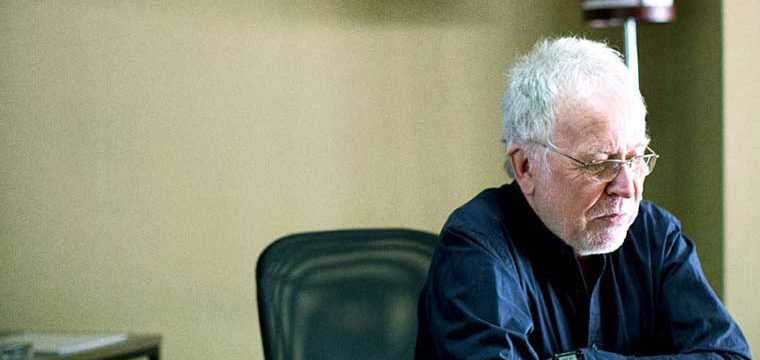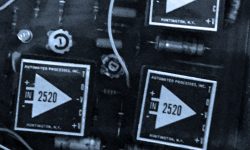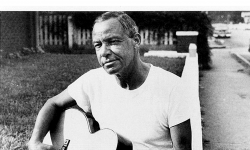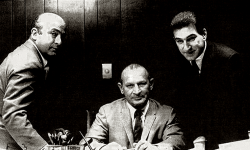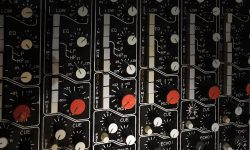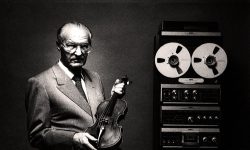I first came to be aware of the designer Chris Jenkins about eight years ago when I was researching about installations for my own humble studio in Tokyo. While I knew him as the bright brain behind the modern SSL designs, such as AWS or Duality consoles, I soon learned that he was also the person responsible for the technical duties at the legendary Townhouse Studios in London, where countless masterpieces were born. Jim Motley, whose help was indispensable in my research of the earlier days of SSL, kindly set up the opportunity for us to interview the designer at SSL Japan offices about a week prior to Christmas. As we nervously rang the door bell of the classic looking four storey building, Mr. Jenkins came down himself and opened the door to give us an unexpectedly warm welcome.
The guitarist
So, were there any particular events that made you interested in designing consoles?
Oh, that’s simple. I was a guitar player. So, if you are a guitarist, and you are technical, and interested in electronics, you get into wanting to have a tape recorder, and fix your own equipment, or even built your own equipment.
What kind of music did you first start to appreciate?
I was a guitarist in the 60’s. I could go to the Marquee Club even when I was sixteen, fifteen, and I would see John Mayall with Eric Clapton, or see The Yardbirds, or see The Who, Cream… so, it was, you know, the 60’s. That whole period of music, because that was accessible to me.
Would you say they were Blues inspired music?
A lot of it was improvisational. Cream was not (blues inspired) given the fact you had a jazz drummer and the bass player, both of who’d come from The Graham Bond Organisation, which was funneled jazz focused, and blues focused. Mixed up with that would be the pop stuff, The Beatles… The Stones started off as blues but they didn’t stay that way for very long. So those are the influences. But from a guitar point of view, the previous influences would’ve been for example The Shadows. Hank Marvin. That sort of playing.
Who was the very first artist you were interested in?
It would be The Shadows. But I just always wanted be a guitar player. So The Shadows, Joe Brown, Cliff Richard, that sort of stuff. That would’ve been late 50’s, early 60’s. Mid 60’s, I’d moved on.
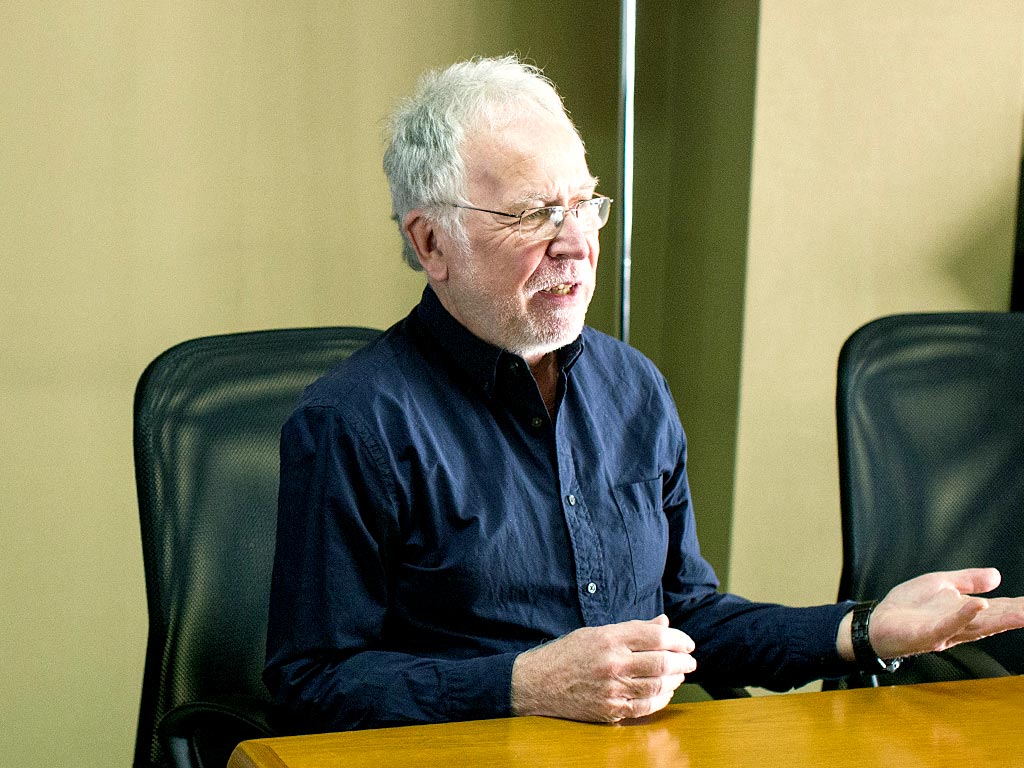
Then you were playing guitar in a band with Alan Parsons…
Yes. Well, we were in school together. We were in the same form. So Alan had actually been kept back a year, he was older than me. But I’d already been in two or three bands in school. There were a lot of musicians. It’s not just Alan Parsons. So another very famous person who was at school, this is Westminster School, was Andrew Lloyd Webber. So he was at the same period, and then, someone who’s not really that known, a guy called Nick Ingman, who is more of a composer or an arranger. And someone else who you probably would have heard of, he was about two or three years younger than me, but it’s Steve Lipson, who worked for Trevor Horn. There were others from that era as well, but those were the sort of well-known ones. I was just asked by a couple of guys, one was a drummer, they wanted to play youth clubs in the holidays.
It sounds like a musical school!
I think it was just the era, really. You didn’t have YouTube or things like that. You worked something out, or someone else showed you something, or you showed them something, so that’s how we taught ourselves. Westminster School’s quite liberal. It had practice rooms, so there were a lot of bands. And there would be house concerts. I played solo acoustic guitar in the musical competitions once. So I suppose it was relatively musical… but it was that period, because you are right at the center of London, Charing Cross Road, where all the guitar shops were sort of a 20 minute walk.
I think, Colin Sanders was in Oxfordshire. Had you already heard about him while in high school?
No no. Not at all. I then left school, went to university, dropped out of university, and then finished up in Greece.
Greece!?
Playing guitar.
Did somebody invite you over to play a gig?
I can send you a link to a YouTube video…
That you are in, playing!?
That I’m in, playing.
That would be so exciting! How old were you then?
Twenty two. So yeah, I was in this Greek Rock band.
Greek rock… so everyone else in the band apart from you was…
I was with an English organist whom I’d been playing with. The rest of them were Greek. So two of us were English and three, the singer, the bass player, the drummer were Greek.
So you had to drop out of university to pursue…
No, I’d already dropped out of college. I was doing nothing. But the reason… it’s quite complicated. My parents were in Greece at the end of the war. And one holiday, we all went as a family to Greece. And I met the son of one of the Greek army people my father knew was my age, and also a musician. And eventually his cousins invited me out to Greece to play with them. So I’d been out on holidays a couple of times. And I took Vic (Martin)…he was Gary Moore’s keyboard player for many many years, until Gary died in fact. But, so we finished up in Greece, I think I stayed there for eighteen months, and I got fed up with it. It wasn’t going anywhere. We were just basically a covers band.
Did you have a specific goal in mind with the band?
Well, they wanted to make it, sort of trying to get a English record deal and stuff like that, but that wasn’t going to happen. But we had a Greek record deal. So the clip that I’m going to send you, the music side, I wrote. Which you can tell, because there is a lot of guitar playing in it. And it was basically used in a movie. In a Greek movie. But…
I would consider it as a success!
Well, whatever. But so, I then came back to England, and I started sort of my sound career by joining the BBC, and I worked as a sound engineer at the BBC in a very unusual department, where it would be more like a commercial studio. We had disk cutting, we had mobiles. So I did a lot of live recording, and through that, I ran into a commercial recording truck called the Manor Mobile, which was run by Virgin. And it was part of Manor’s studios. So you had the Manor’s studio, which was based in Oxford.
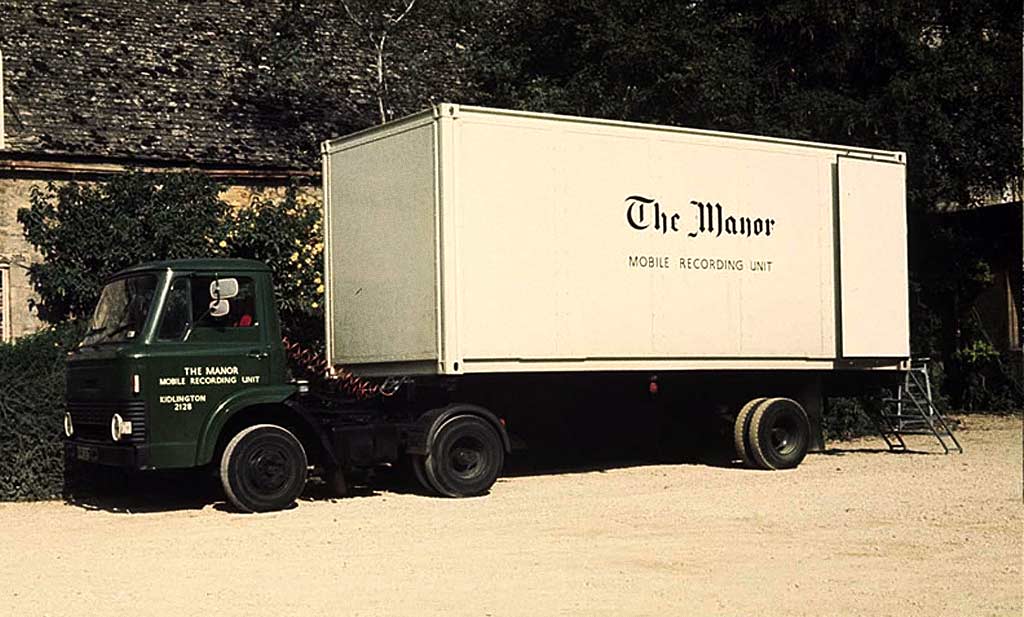
And I decided to leave the BBC, so I applied for a job with the Mobile. But I didn’t get a job with the Mobile, but then I got a call from the technical director of Virgin, Phil Newell, who’s quite well-known in the industry still, to say they were building a new studio complex in London, was I interested? And so I said, “Yeah, sure.” It literally was five, ten minutes walk from where I was located at the BBC. It was just down Goldhawk Road, and we were at Shepherd’s Bush.
From the BBC to the Townhouse Studios
So I went down to meet with Phil, and he showed us what they were doing, and I thought, “Wow.” And they were building two studios, and Studio 1 was going to have a big custom Helios Console, as that was the same as the Manor, and for Studio 2, he decided to buy this Solid State Logic console, which I’d never heard of.
So that would be the SL4000B.
Yeah, the B. And I’d never heard of it. But that month in Studio Sound (magazine) was a full page advertisement for Solid State Logic. I’ve got it on my wall in my office, but it’s something where if you are not thinking about buying this console, it’s quite a funny advert. And I looked at it, and I was used to Neve and Studer at the BBC. We had a really nice Neve console in a truck.
You were already an established guitarist, but how did you get familiar with these rather complicated recording equipments?
At the BBC. They have a very good training.
How do they pass on the knowledge and techniques?
Well, you learn it from other people. So when I started at the BBC, I would start as editing and tape op. And you learn to train your ears. So you do editing and assembly and mastering, and you start operating the console.
But what a musician hears, and what a sound engineer hears, to my ear, I think they are hearing something different.
Oh yeah. Absolutely.
How did you make the transition so smoothly?
Well, I cannot engineer myself, for example. I’m about to change this, but I’ve never felt comfortable about trying to engineer myself. I have to get someone else to operate the desk, then I can play. If I try and play and operate the desk, it doesn’t work.
Even when I was in the BBC, I was using the studios to do some music. When I first joined the BBC, I was sort of in another band with someone who’d just left Roxy Music. And we did a couple of sessions at EMI’s Island Studios at Hammersmith. So I got into the whole studio side of it. And at the BBC, I watch the senior engineers how they approach it. We were doing big light music orchestras. Forty, fifty piece orchestras, and we were doing classical recording as well as doing the rock stuff, so I picked it up. And then when I went to the Townhouse, although I was the maintenance guy for the first year, I did occasionally do sessions as well. And then in the second year, I moved a little more into mobile recording again.
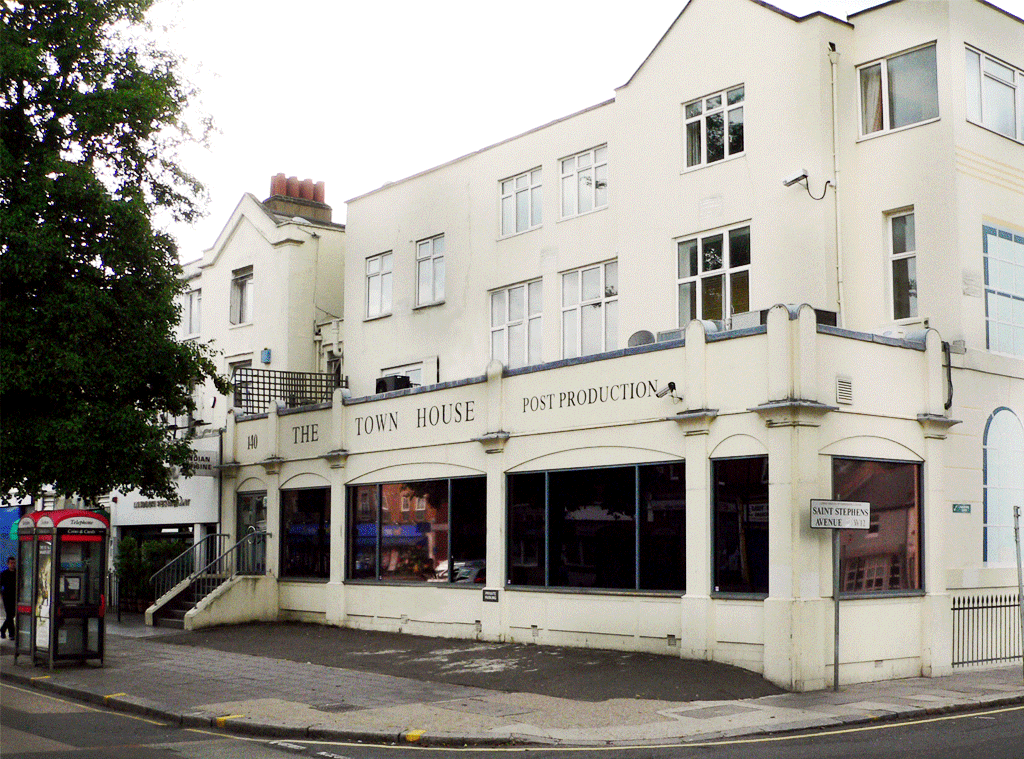
And you know, the reason that the Manor bought the SSL was because SSL was five miles from the Manor Studios. So the Manor was in Kidlington and SSL was in Stonesfield. So Phil had gone over and met SSL and decided that that’s what they’re going to buy for the Townhouse. So, that’s how I met Colin (Sanders). So, I basically did the installation for Studio 2. I looked after all that.
I heard so!
You know, because there were two maintenance guys. The other maintenance guy understood the Helios, but he wasn’t very technical. He wasn’t as technical as me. So when he fixed things by taking this out and sticking another one in, whereas with the SSL, you couldn’t do that. You actually had to open it up, and find the little chip that was broken, and change it. And that, I found it very easy to do. Colin was sort of three years older than me. I was like twenty-eight when I joined, so Colin was only thirty-one, and he didn’t take everything very seriously. They were relatively successful at the early stage. He’d already sold four or five consoles.
Including the Acorn?
No, the big ones, in terms of commercial, the B series. Country Lane, Produces Color, the Sierra in the States, and then the Townhouse, and there was one in Denmark… so there were about seven or eight, and then the big one was Record Plant in L.A., which I actually installed for him.
Studio 2
Did you also consider other options for Studio 2, such as the Neve?
There was no intention, Phil was not going to buy a Neve console. They were going to do something different. Because the whole point of Studio 2 was that it was going to be different, hence the Stone Room and stuff like that. And they were looking at the Harrison console. And then, they went over to Stonesfield to check the SSL out. And I think Phil decided to rather buy an English console than an American console. But I think it was down to probably Mick Glossop, my friend.
Yes. I remember reading an interview of Mick Glossop talking about the Townhouse’s SSL.
Oh okay. I saw Mick last week.
You did?
Yeah yeah. We still keep in touch. Because he is the director of the Music Producers Guild, MPG. And I’m a member of the MPG. And we had a Christmas drink party last week!
That must have been wonderful!
Yes. But yeah, so Mick would’ve been involved in the decision as well. And Mick engineered albums of the Townhouse on the SSL. But then, sort of the real success story was the combination of Hugh Padgham and Steve Lillywhite, which started really on XTC. …I can’t remember the name of the album, the one with “Making Plans for Nigel”.
“Drums and Wires”. So it involved the start of that gate reverb and the snare sound?
Yeah. Probably on the XTC thing. But it was the combination of Steve and Hugh. They both hit it off, you know, and Steve was very young. The other thing of Studio 2 at the Townhouse, was that it was just around the corner from the maintenance room. So if they ever got stuck, it was very easy for me to go in and sort of help them out. So you got very involved with the sessions in Studio 2, because that console was new and people didn’t really understand it.
So that’s where it started, and then Steve got the Peter Gabriel album “Peter Gabriel Three”, which started with the Manor Mobile at Peter’s house, and then finished up at the Townhouse doing overdubs and mixing, and then that’s where we got the Listen Mic Compressor stuff. And then from Phil Collins playing on the album and working with Hugh, Phil decided to do a solo album. He approached Hugh to engineer and produce him.
The night of the Listen Mic Compressor
Can you please tell me more about what happened that night? I heard that Peter told Phil not to use any metal…
No no, not at all. Not really. Peter decided that he didn’t want any cymbals on the album. But he got Phil Collins into overdub drum parts. And Phil was warming up, and someone pushed the Listen Mic Compressor, and you got this incredibly compressed drums sound. So we put an omni directional mic, STC-4021. It’s called “Ball and Biscuit”. So that was hanging in the ceiling. And one of the things I’ve done with the console was, because the original SSL routed the Listen Mic only to the mini loudspeakers, and Mick Glossop didn’t like that. Because on the Helios, the listening mic went to whatever speakers you were listening to. So I modified the SSL so it worked the same way. So when they’d hit the Listen Mic, I was listening on the main monitor, and you’ve got the full sound of the Listen Mic Compressor. And Peter went, “That’s unbelievable, we’ve got to be able to record that.” So they called me, and they go, “We need to be able to record that!”
So you had to mod again! To take out the signal from the Listen Mic Compressor and put it back into one of the inputs.
Yeah. So I rang Colin up, and I said “Is there an easy way to do this?” So you’ve got the 651, the center section thing, and it’s got two multi way connectors, that take the signals in and out of it. And he said, “In the connector, there are spare wires going to sockets.” So all you need to do is to use one of those spare wires, and on the other side of the 651, you’ve just got to take the output of the Listen Mic card, and connect it to one of the multi pin sockets. And luckily the multi pin sockets were exactly the same as the remote control on the Ampex tape machine. So I had the pins and the tool for inserting them. So it was just a matter of basically taking the 651 apart, taking the bottom panel out, getting a piece of wire with the pins on and inserting those into… you know, linking it through and soldering to the side. And on the other end, finding whatever spare cable.
You’re incredible.
Because its documentation was very good. It was all labeled. And then wiring it to the patch bay, I then took it out and plugged it to a channel, and lo and behold, that was the output of the Listen Mic Compressor, and everybody was happy.
Do you remember how long this whole procedure took you?
Probably three or four hours.
And that was right after they told you that they needed to record this.
Yeah. So I said, “It’ll be ready by when you come in tomorrow morning.”
So that was at night?
Yeah. So I did it at the night. But we worked overnight, because in those days, all professional studios, if a band was working, you had a maintenance engineer on call. We had two studios, so probably I would’ve been there in any case, because there was a session going on at Studio 1. But like I said, I think it was about three, four hours. It’s very easy. That’s the beauty about that console. From a maintenance point of view, it was incredibly easy. Because the whole of that center section pulled out, pulled up, and locked. And then it’s three wires to solder. You know, we did loads of modifications on that console.
That was still the SL4000B, right?
Yes. The thing that people don’t realize about the B series is that the channel compressor is the same as the bus compressor. So you won’t get exactly the same sort of sound using the E series as you would with the B series.
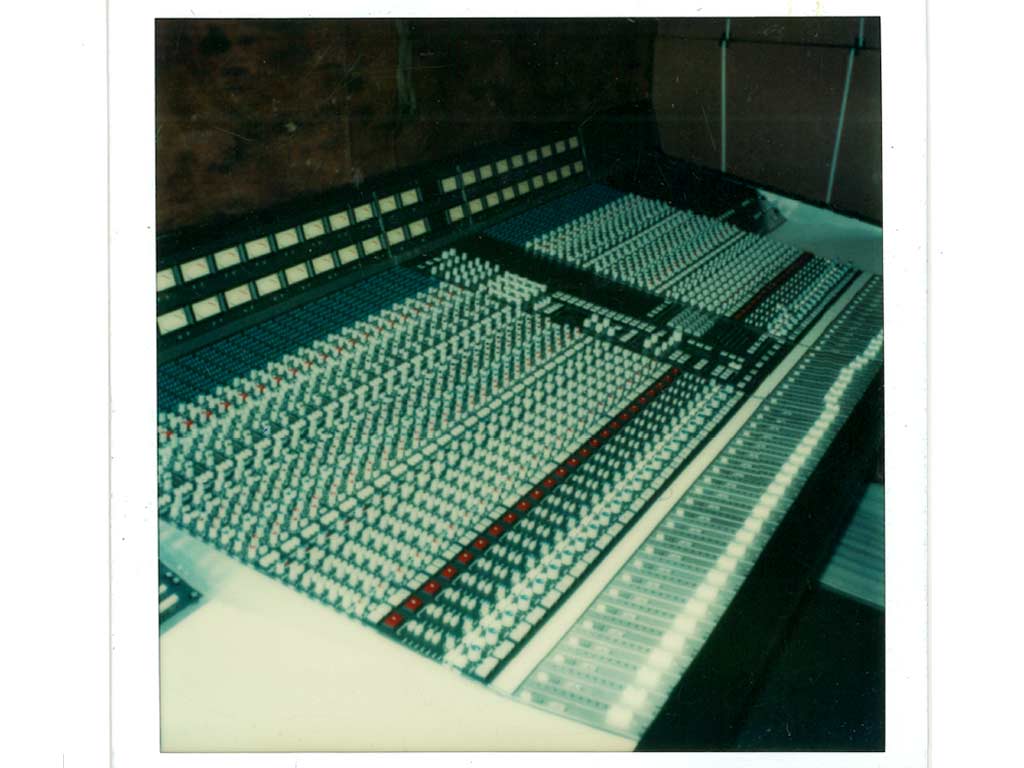
You had that installed on every single channel on SL4000B and also on SL4000A?
Yeah. The A series, but that had a three band EQ. Not four band.
Only two were made?
Yes. Two of them. I fixed one of them…
Recently?
No no. Years ago. It changed owners and went somewhere in Denmark.
Expander and automation system
I believe that it was SSL that made having a compressor on each channel an industry standard. Why do you think SSL decided to do that? What were the requirements from the studios?
I don’t think it was the requirements from the studio. I think it was possibly Colin. I think a lot of it was for the expander. Because the big thing that everyone was fighting in those days was tape hiss.
The noise.
Yeah. Which is why you got into having the automation. Why you had automation was to mute all the tracks when they weren’t playing, to avoid tape hiss. But if you use an expander, that would be automatically muting. People get focused too much on the gate and forget how good the expander was. The 2:1 expander is almost transparent. You don’t hear it working. So yeah, you were always fighting noise. Tape noise, echo plate noise. Because, you know, the only things you ever used for delays were tape machines. So in the control room for example, I think we had four stereo tape machines. One would be used for recording the mix, but the other three would always be in use as delay machines or pre-delays for plates and stuff like that.
Nowadays, we sometimes almost appreciate the tape hiss to a certain extent, because it adds some analogue touch to a sound.
We didn’t want tape hiss. You know, if you had 24 channels of tape hiss, it’s 3dB each time you double the number of channels. If the noise coming off one channel is minus fifty, you know, it gets down to minus forty pretty quickly. I have to say that at the Townhouse, very few people used the automation system. No one used the automation system. They just didn’t feel comfortable with it. It wasn’t that reliable, to be honest. It was still a little bit buggy. Mick always used to try and use it, but Hugh and Steve never used it.
But at that point, it was already based on SMPTF…
Timecode.
Computer…
Yeah yeah.
But it was still buggy?
Oh yeah.
In what way?
It would crash.
It would suddenly stop??
Yeah. So if I hacked them, then you lost something. Then everyone got upset. Mick really was the only person who used it. And possibly Tony. I think Tony Platt used it a few times. But Hugh and Steve never used it. I used it when I engineered stuff a little bit. But in the early days, it wasn’t really until he (Colin) released the E series in 1980. We used the auto locator, and the queue list and stuff like that. And originally, his timecode was backwards. It was quite interesting. It was the wrong way around.
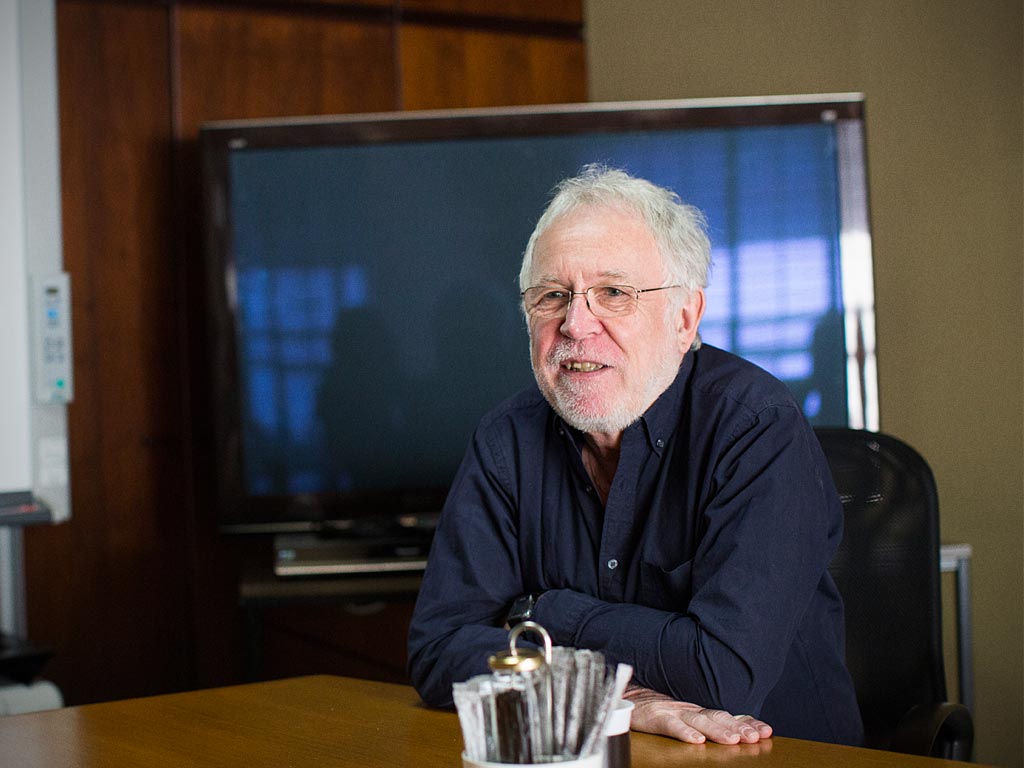
Why would it be…
They just made a mistake! Because it generated its own timecode and read it, it just worked. But then I had to tape in from the BBC with the timecode on, and I put it on, and I saw that the clock was going backwards when we were in play, as opposed to forwards.
Oh no!
I mean, you know. There was a lot of development went on. Because the technology allowed you to do that. The technology today doesn’t. Even analogue technology. Because we use surface-mount and stuff like that. You really can’t do the sort of things that you used to do with the technology of the 80’s.
The pioneers
Speaking of technology, the inline console didn’t exist until Harrison 3232 in 1975. I believe that Colin and Harrison were the two innovative people in terms of forwarding the inline concept.
Yeah. Harrison has always been an innovative console designer. Even nowadays, their MPC 5 Film Console is very clever. There were Mr. Harrison, MCI’s Jeep (Harned) and Colin, and Rupert (Neve). I once did an AES panel on automation. I think it was in 1980. We had the users and the manufacturers. So it’s Colin and Mr.Harrison and… it was quite funny seeing them all talking together!
What were they talking about? Do you remember?
Things to do with the circuitry and op amp and things like that. It was quite funny. But Colin was the youngest, you know.
What did you think about him when you first met him?
Colin? We got on very well. We have very similar backgrounds, middle class public school. When I was at the Townhouse, we became very good friends. I would ring in for advice.
Would he come over to Townhouse too, sometimes?
Oh yeah. Yeah. And I would go up to Stonesfield to have lunch with him or pick stuff up, because I was often at the Manor. I mean, obviously, when I actually started working, the relation changes a bit. But we were still, you know…
Mm-hmm.
He liked… He wasn’t particularly a one-on-one person. He liked to be with a crowd of people. So he was a good host. Normally you didn’t just go out for a drink with Colin. You went out with Colin and a few other people. You know, the early days of SSL, people were working till nine, ten o’clock at night. Then we’d just go on up to the pub for last orders. It was very social in the early days when it was still thirty or forty people. And then, it sort of went viral, suddenly. Within a space of two or three years, we quadrupled production.
The “E”
I don’t specifically know when SL4000A first came out, but I’m assuming it was in 1977?
Yes.
And in 1979, SL4000E was already coming up.
The E was, yes, it was just shown first in 1979.
So that’s only two years right there, for example.
Yeah.
They must have been so busy. What do you think was the creative process? Why do you think they could come up with all those ideas?
Well, the jump from the B to the E, was basically the feedback that we and the users gave for Colin. So the three major users were us (the Townhouse), Harry (Thumann) in Country Lane Studios, and Record Plant. I’ve seen the notes. We all basically said the same thing. On the B series, for example, the routing is two rotary switches. And you go, “Well, in reality, is that really a problem? Cutting route to two tracks at the same time?” And the dynamics are actually working on the fader VCA. So you can never insert processing in front of the compressor, because the compressor is always physically the last thing in the chain.
And probably the biggest one of the lot, was the fact that when you were mixing, the small fader did nothing. The small fader basically could not act as an extra input. And that was probably the biggest problem that we had. On our Helios, which was not an inline console, the monitor mixer could be another 32 inputs to the console when you were mixing. So in fact, we were restricted on the SSL, because we finished up having to buy all the extra modules to get 40 channels. Basically, because when people were mixing, they may have put ten different things on the same track of tape, and they want to split it out over ten channels and stuff like that. We all said that, and I think Colin took this on board, and came back with the flexibility of the E series channel strip, which to all intents and purposes gives you that flexibility of the small fader being a send or a return to your routing, plus the dynamics are separate and you can change the order, you can split the filter, etc, etc. So that suddenly made the console incredibly powerful.
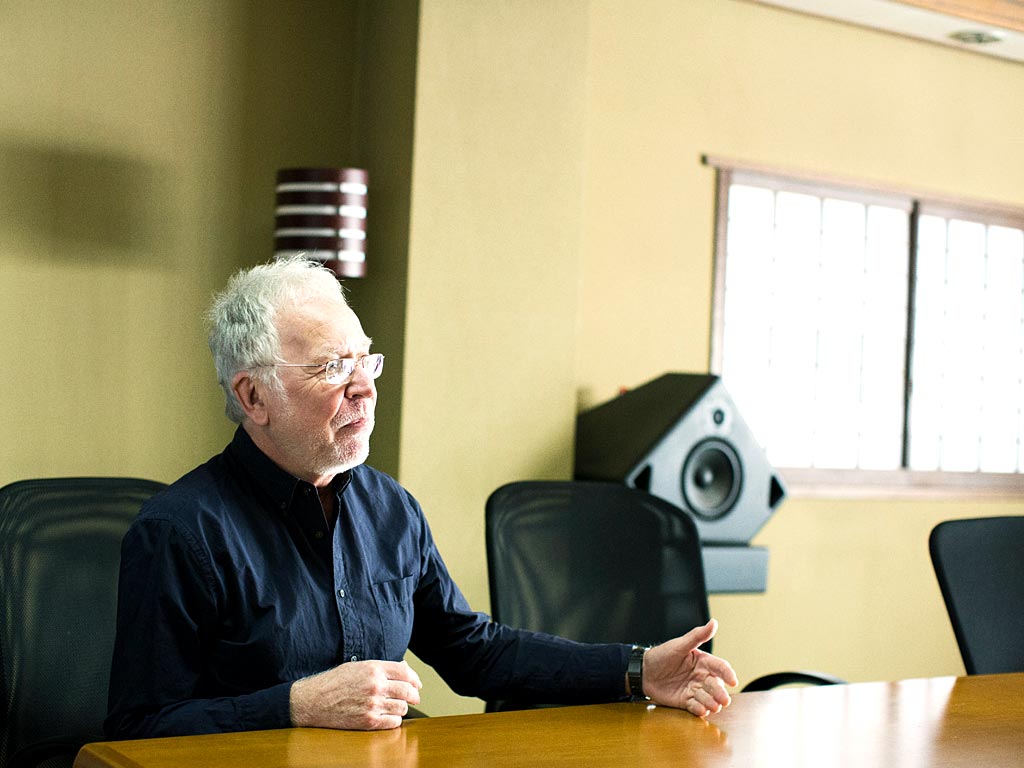
And in the UK, the studio that really put the console on the map, was the Sarm Studios with Trevor Horn. And the two engineers were Julian Mendelsohn and Gary Langan. Trevor was the number one producer, and Gary and Julian decided that they wanted to use the automation system. Because they were using 48 tracks at Sarm, and they had two Studers and a synchronizer. So they were pushing the production limit. They had to use the automation system. Trevor didn’t really want to.
But otherwise you would’ve needed so many people in front of the desk…
That’s not really how you did it! You didn’t really do it like that. That’s a sort of slight myth in some ways.
Oh, really?
Yeah. You just do it in sections and you edit it together. So you mix the first verse. You put little marks where the faders finish up at the end of the first verse, and then you mix the second verse, and then you edit together.
So the thing about a lot of people in front of the desk was never happening…
Sometimes. People like Steve Lilywhite, that’s how they always did it.
But you’d usually do it by section?
You do it section by section and edit the master together. So basically you never heard the finished track until you finished editing. And then you’d have to play it back. It wasn’t the ideal way of doing it. So the whole thing about the automation was that, you didn’t have to do it like that. So it was Sarm Studios, really. And suddenly, everyone was talking about Trevor Horn productions. And in the States, it was Bob Clearmountain. Closely followed by Chris and Tom Lord-Alge.
SSL producers are amazing. I am a huge fan of Andy Walles.
Oh yeah yeah. So do you have a copy of the “Black Book”?
I do.
You do? Oh okay, good. It’s the sort of tribute to all those people.
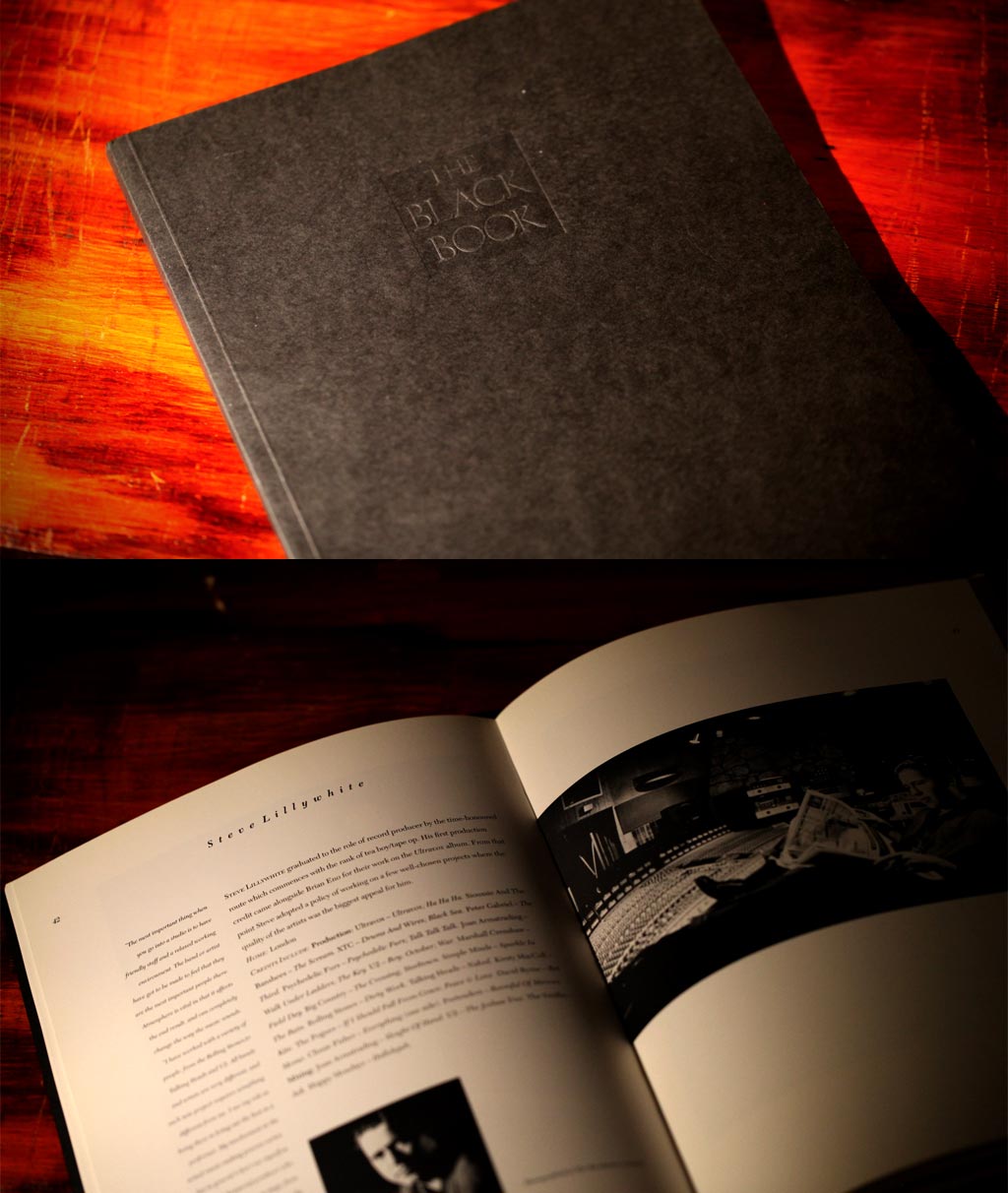
The bus compressor
One of the distinctive SSL sounds to me is the bus compressor. Can you tell me your story about it?
We built the first ever “Bus Compressor Clone” at the Townhouse, to put in Studio 1. So we actually bought the cards off Colin (laughter). He sold us the cards and we built our own version! And it appeared on eBay about five or seven years ago. And actually, a young guy at SSL bought it for a shitload of money.
It came back!
And he wanted me to give him a certificate of authenticity.
Yeah, of course. I’d also do the same thing.
My oldest friend, we worked at the BBC together, and I went to the Townhouse and he came to the Townhouse, then I went to SSL and he came to SSL. But we built more than one of those sort of Quad Bus Compressor clones, but the design is quite interesting. The sidechain circuit is virtually a copy of the LA-4. And the LA-4 is an opto compressor. So it uses a bulb, and the attack and the release time constants are the function of the bulb, and they are right at the end of the gain reduction process. And that’s exactly the same as what happens in the Quad Bus Compressor. On most compressors, the time constants are before you set the ratio. But on an SSL Bus Compressor, the time constants are after the ratio. So essentially the time constants are far more linked to the amount of compression being applied. The more compression you apply, the slower it takes to react. Which is why I think it sounds the way it works on a complex signal. But on simple signals, there’s not that much difference between using a Quad Bus Compressor and a channel compressor on the E series.
And the other thing with the Quad Bus Compressor is that it’s actually a feedback compressor. It’s based on a BBC Limiter, which you got the sidechain circuit, and you got the main signal control element, and you’ve got the second control element on the input of the sidechain. So it is effectively a feedback compressor, because as the compression is applied, the input to the sidechain is reduced. So it isn’t an open loop feed forward compressor. The channel compressor on an E series is an open loop feed forward compressor.
Analogue audio design
How about the technology side? Was there anything that’s groundbreaking?
There was some clever stuff, but his clever circuit design is more in control than audio possessing. Most of the designs are basic. They are out of the op amp cookbook. Some of the groundbreaking things were his decision to not reference anything to ground. So that the logic, for example, ran between plus eighteen and plus twelve. Not between zero and five. He avoided all the problems of ground currents and the thing humming and stuff like that. There were one or two clever things on the computer boards. The SMPTE generator board, for example. That’s quite clever.
But they were mostly within the conventional technology…
If you want unbelievably clever analogue audio design, you have to look at what our guy Dave Mate did with the 9000, and what we still do. If you look at the designs of our modern mic amps that we use in the digital consoles, you look at them and you go like, “My god, I don’t understand how that (works)!” The whole thing with DC servos and removing capacitors and stuff like that, that is very clever. Because if you don’t get that right, it goes unstable. But we have all the tools to simulate this. We can electronically simulate all the circuits before we actually commit them. We could never have done that in those days. And that was always the criticism of the SSL. The control side was unbelievable, but the analogue sonic was okay. They weren’t amazing.
What were they comparing with?
People did still like the sound of transformers and stuff like that. Certainly for tracking. People still liked tracking on Neves. So that became the big thing, you know. Track on a Neve, mix on an SSL. However, you know, having said that, I think a lot of great-sounding records were tracked on the early E series consoles. But the early E series consoles are quite different from the later E series consoles. If you go through the circuit board’s revisions, there were some quite large changes that took place over the years.
The Brown Knob and the Black Knob
I tend to prefer the Black Knob more often than the Brown Knob when tracking.
Interesting, there are two versions of the Brown Knob that people don’t realize. One of which is virtually the same as the Black Knob. The Black Knob was done for Air Studios originally. The main differences are, the high pass filter is 18dB per octave as opposed to 12. And the range of the cut and boost is bigger.
If I try to make subtle changes with the brown knobs…
You can’t with the early ones. You can with the later ones. The problem with the Brown Knob was that the center tap was directly connected to ground. So one of the things I used to do is to cut the center taps off. That changed the low completely, but it meant that you weren’t totally bypassed when you were at the detent.
You joined SSL in 1981, so this transition from the Brown Knob to the Black Knob was after that?
Oh yeah. As I said, it didn’t happen until we sold the console to the Air Studios, which was in 1983.
SL4000 and SL9000
You know, you once said that the relationship between Vox and Marshall amp versus Fender amp is like the 4000 and the 9000.
Did I! (laughter)
Yeah, I was very curious to hear more about it.
When the 9000 came out, everything was different. Completely different technology, different automation system, and people were split. So the old school users didn’t like it. And suddenly the old SSL sound became more appreciated. But in the States, the 9000 took off, because they liked the cleanliness. They liked the sort of more surgical nature of the automation system, because they were used to things like the Massenburg automation and stuff like that, which was incredibly complicated and not particularly user friendly. But the 9000s never did that well in Europe. The States was the big market. And actually, to an extent, here (Japan) we had quite a few 9000s.
But you also said there were engineering style differences as in the 4000 is more for the UK. What kind of differences did you have in mind? Do you think there are some spiritual diffrences?
(Sigh) I just… you know, having watched sort of English engineers, they are more open to sort of experimenting than probably the American guys. Mick Glossop, for example, he was always looking for different ways of doing things. And the guys at Sarm, Julian Mendelsohn and those guys. Whereas I was finding Americans, just a little bit… they have one way of doing it. I remember doing the Mobile thing with the American ones. He had, literally, he was lining the EQ across the drums up with an oscillator. Didn’t listen to the drums. He set this EQ and that was what he was going to put on the drums. It didn’t matter what. And I just thought, “This is crazy.” But that was how he wanted to do it. That’s probably why I said that!
That makes me think about some of today’s engineers who use their eyes more than their ears.
Yeah. That’s what the computer has done. You don’t need an engineer to make music anymore.
I’m grateful that you said that. And that’s actually the whole point of why I’m here today. There are many more people out there today, who know, for example, what an LA-2A is. It’s a compressor. But I see more in it. I see a spirit of the very creator, experimenting, making mistakes, enjoying but struggling, and then bringing something new to the table. And to me, that is more creatively inspiring than some of today’s artists, engineers, or producers.
I think most of it is luck. You know, the 1176, the way it sounds the way it does is probably not because someone set out to make it do that. They set out to make a compressor, and they go, “I’m going to use an FET for the gain control element.” And they design it, and it sounds the way it does. I don’t think people necessarily set out with a goal in mind. The BBC made limiters. They actually sound extremely interesting. They are just very good. They are extremely good. They are limiters. They are not compressors.
“Good” as in, they don’t pass any signals?
No, no. They just sound good.
Musically good.
Hmm. So I don’t think Rupert Neve set out to design… it’s an accident that his stuff sounds the way it does. If you look at the designs of the early Neve stuff, it’s basically how you would do it with valves, but using transistors. You know, use the OC-35 driver transistor? I mean, that’s like using a valve. It’s completely over the top. It’s completely unnecessary.
Making music
In this digital era, what do you think we can do to keep ourselves a little more experimental and creative?
I’m not sure the focus should be on technology. I think you need to look at how music is created. Music has now become almost isolationist. People create in isolation. They don’t create as part of a team. And you have tools that allow you to do that.

The music that was done in the 80’s, when you approached recording an album, bands could play together. They could actually play for three minutes. Nowadays, and I still do engineer stuff occasionally, but musicians are aware that they play this chord two bars here, then that’s it. They don’t need to worry about it, and they can just take that, and stick it there, and stick it there, and stick it there. The result is sterile. Because there is too much choice. You’re missing what went into making music. And some of the fun of working in a recording studio was this coming together. Having been someone who understood engineering but was a musician in a recording studio, I learned very quickly that an engineer can make the difference between whether you could perform or not. And the job of the engineer is not just to get the sounds or whatever, it’s to create the environment that allows musicians to perform. And again, that’s all missing now. You don’t even need to do that, because you are going to take the drum track, and then tell the drummer to go away, and then you are going to move every single hit. There is a place for that. It changes how music is made and it changes how music sounds. I mean, it really doesn’t matter which version of the SSL bus compressor plugin you use. The differences are tiny.
Yes. I understand.
Having said that, I’m finally going to put together my own home studio! (laughter)
You are?
Yes!
Of course it will be an SSL console?
I don’t know! Not necessarily. No, if I had an unlimited budget, I probably put a 948 in. The AWS is my contribution to SSL. We sold over a thousand now, so I’m quite pleased about that.
It’s an incredibly amazing thing.
(Clears throat) You know, all the sort of debate about digital mixing. You know.
Hmm-hmm.
Doesn’t make any sense to me, what so ever. Because the one thing computers can do is add two numbers together. That’s all that the mix engine is doing. It’s adding numbers, it can’t possibly get that wrong!
(Laughter) Yeah, I like that!
So there has to be something else going on. If people think digital mixing sounds different, yes, it does sound different, because it does it perfectly. Whereas in analogue mixing, you have a noise floor. And everything below that noise floor is basically thrown away. In digital mixing, everything gets added together. So you will generate artifacts that you wouldn’t hear in an analogue mix, because it will be below the noise floor.
Yeah yeah. That makes total sense, and I’ve never thought about it that way.
That’s sort of my take on that.
You know, I want to sit here and listen to you for hours and hours. I really truly appreciate your time today. I know you have made sacrifices to make this happen, and I’ve already taken more of your time than I said I would. But can I ask you one last question? Which is very personal.
Yeah, sure.
How… how was Jimi Hendrix?
Oh. I saw him twice!

